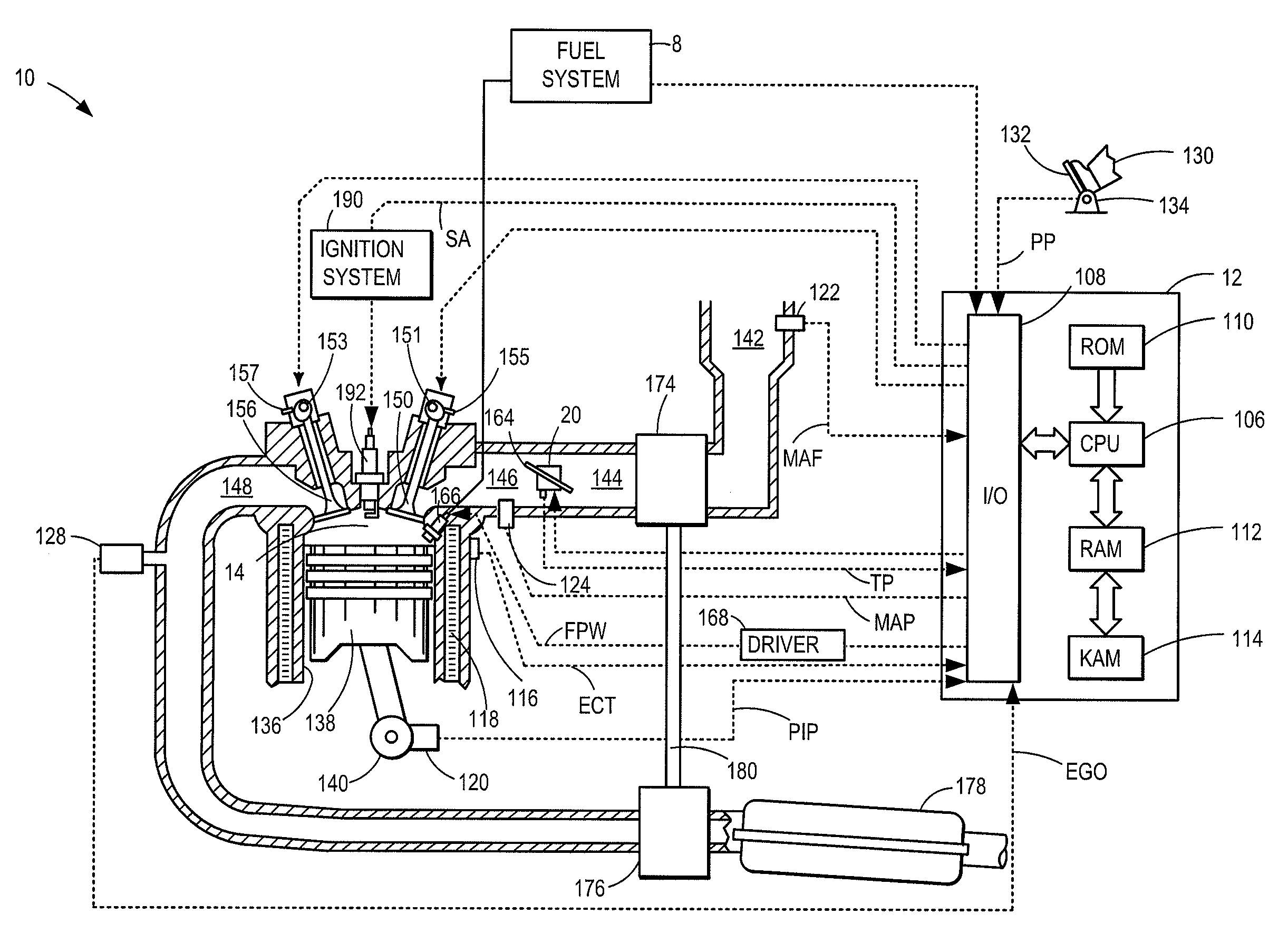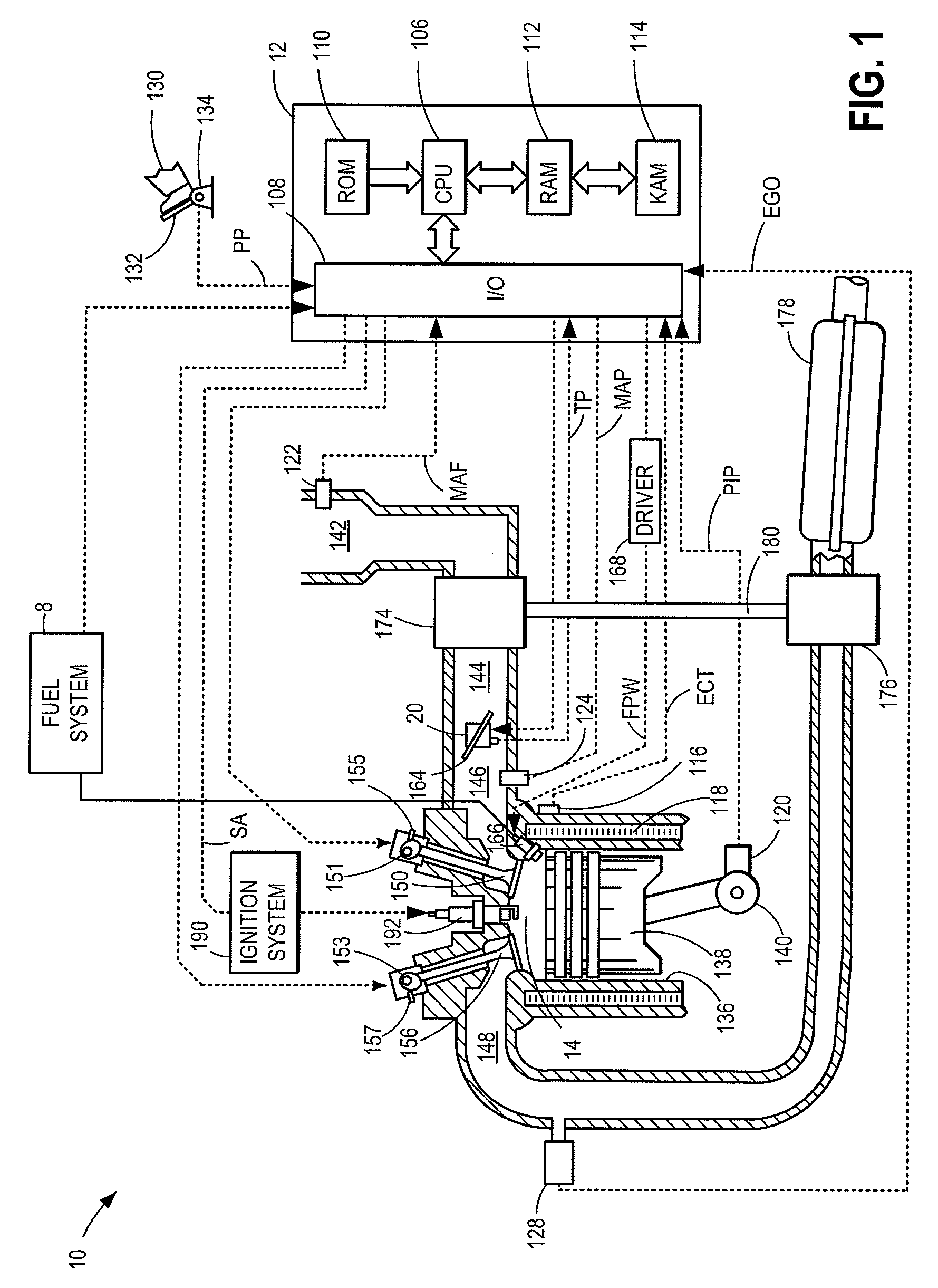Fuel-based injection control
a technology of fuel-based injection and control, which is applied in the direction of electric control, braking systems, instruments, etc., can solve the problems of significant reduction of the efficiency of fuel evaporation and the formation of a homogenous air-fuel mixture, degrading combustion stability, and increasing the potential for engine misfire, so as to improve the atomization of alcohol-based fuel and increase the alcohol content of fuel. , the effect of increasing the pressure on the fuel rail
- Summary
- Abstract
- Description
- Claims
- Application Information
AI Technical Summary
Benefits of technology
Problems solved by technology
Method used
Image
Examples
Embodiment Construction
[0015]The following description relates to systems and methods for improving the startability of alcohol-fuelled engines at cold-start. By performing compression direct fuel injection (as shown in FIG. 2) in an alcohol-fuelled engine (such as the engine of FIG. 1), and further, by retarding the timing of the compression injection as the alcohol content of the injected fuel increases, the evaporation of the alcohol fuel at cold start may be improved. An engine controller may be configured to perform a control routine, such as those depicted in FIGS. 3-4, during an engine cold start, to adjust the fuel injection settings, including an injection timing, of a compression direct fuel injection responsive to the fuel composition, for example, the fuel alcohol content. By retarding the compression injection timing as the fuel alcohol content increases, as depicted in FIGS. 4-5, fuel evaporation and formation of a homogeneous air-fuel mixture at cold start may be improved, without the need ...
PUM
 Login to View More
Login to View More Abstract
Description
Claims
Application Information
 Login to View More
Login to View More - R&D
- Intellectual Property
- Life Sciences
- Materials
- Tech Scout
- Unparalleled Data Quality
- Higher Quality Content
- 60% Fewer Hallucinations
Browse by: Latest US Patents, China's latest patents, Technical Efficacy Thesaurus, Application Domain, Technology Topic, Popular Technical Reports.
© 2025 PatSnap. All rights reserved.Legal|Privacy policy|Modern Slavery Act Transparency Statement|Sitemap|About US| Contact US: help@patsnap.com



